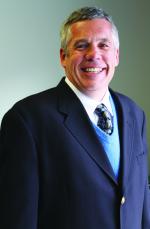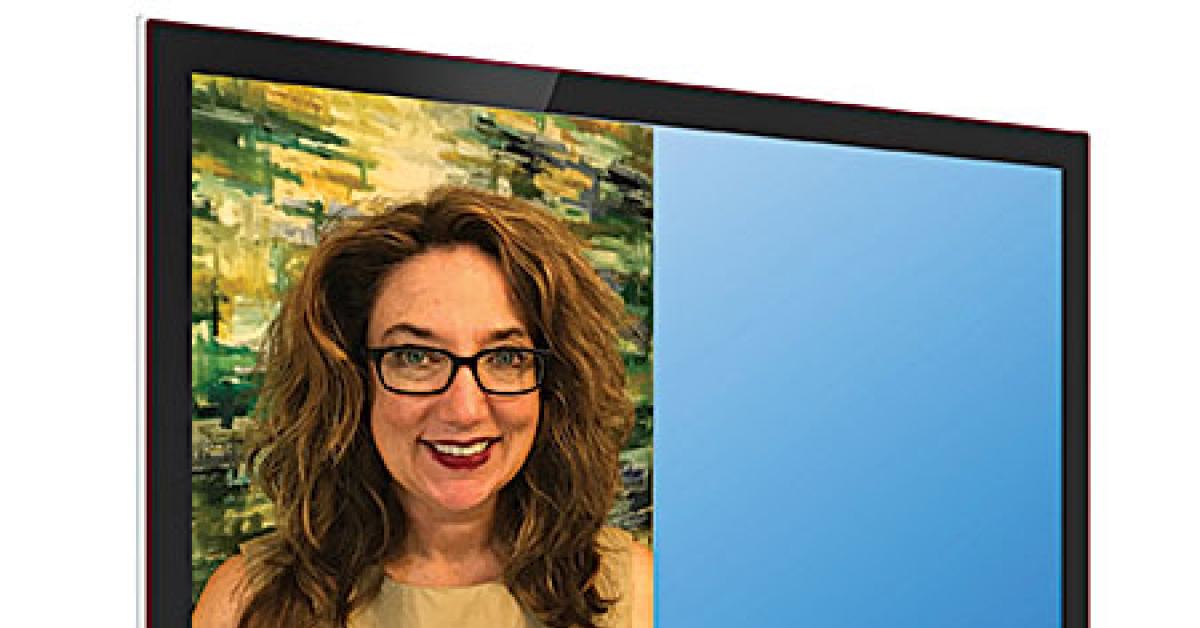CHICAGO — <Fade in: stylish, soft, jazzy intro music.>
Announcer’s voice: “The world is having a love affair with relaxed-fit clothing and, a relaxed-fit lifestyle! Welcome to Jeans and a Tee. Our show today is on fabricare’s view of casual wear.
“Sure, we all still enjoy the special feeling that comes with getting ‘decked out’. But the casual look is everywhere, and it might be here to stay. Or is it? Let’s find out. To take us on this journey today, we’ll need a little help.
“Let’s welcome your host for today’s show, American Drycleaner (ADC), who will ask two people from the fabricare industry how they feel about all that is casual: Where it’s led us so far, where it’s at currently, and where it might be leading us to. Ok, everybody get comfortable, and take it away, ADC!”
ADC: “Thank you, announcer. Hello and welcome everybody. Today, we’re asking two professionals from fabricare to get comfortable on our ‘virtual couch,’ and share their feelings on casual wear. So let’s get ‘casual’ with them right now and get right to it! Let’s meet our second guest on the show, here she is, give a special warm welcome to Ms. Lorynn Divita, associate professor of apparel merchandising at Baylor University in Waco, Texas.”
<Loud applause as the guest comes over and takes a seat and gets comfy on the couch.>
American Drycleaner (ADC): “Hello Ms. Divita, we're glad to have you on our show today. Please, if you would, briefly tell readers about yourself and your job?”
Divita: “I am an associate professor of apparel merchandising at Baylor University in Waco, Texas, where I have been a member of the faculty since 2002.
“I have taught all sorts of courses related to apparel: a textile science laboratory, a retail math course, an apparel quality course and others, but my great love has always been fashion forecasting. I’ve taught forecasting for 6 years and the textbook I co-authored, Fashion Forecasting 4th edition, came out in 2015. Forecasting changes so fast that I’m getting ready to start revising the book, but the constant change is what makes it fun.”
ADC: “So, how are we defining casual wear in today’s world?”
Divita: “The definition of casual wear is changing rapidly for consumers. When Levi’s launched its Dockers line in 1992, they really created the casual business wear category and at the time, casual wear meant a more relaxed alternative to suits, but still tailored.
“More recently, with the rapid rise in popularity of the athleisure category, consumers have redrawn the line in the sand to now include items like jeans and T-shirts, which previously would have been considered too informal to be considered casual wear. At the university where I’m a faculty member, in some departments, the professors wear jeans to teach and no one thinks anything of it, while faculty in other departments still wear more traditional work attire.
“Instead of cotton pique knit polo shirts, some men wear polo shirts made from performance fabrics such as Dri-Weave and other fabrics used in athleisure wear with their khakis and no one questions their professionalism. My students tell me that they ‘feel so dressed up’ when they wear jeans, which is a real shift in mindset.
“For our purposes, I’d describe casual wear as the vast area between semi-formal wear and athleisure, which leaves a lot of room for interpretation to be sure! The fact that this is so subjective does cause a lot of confusion for consumers when trying to determine what attire is appropriate for an event.”
ADC: “Talk about how much casual wear volume there is being cleaned today compared to dry-cleaned garments?”
Divita: “This changing definition of casual wear and its increased acceptability in all kinds of social and professional situations means that the category itself is bigger than ever before, so it is going to represent a larger portion of items which require cleaning.
“Changes in consumer tastes and innovations in technical and performance fabrics have made it possible that a consumer could have an entire wardrobe that does not contain any items that are labeled ‘Dry clean only’ except for formal attire.”
ADC: “In your opinion, are drycleaning operations going after this growing business segment more? Doing enough with their marketing, apps and websites?”
Divita: “Many young people today value experiences over owning a lot of things, so having the free time to do things is the most valuable commodity to them, and they are very willing to outsource jobs they don’t like. The New York Times ran a story in July that was titled, Want to Be Happy? Buy More Takeout and Hire a Maid and I know many young people who agree with that sentiment.
“Fabricare fits this need perfectly, it is one of the original outsourced chores! But I don’t think that dry cleaning has succeeded in getting young people to view their services in the same way they would view takeout or a maid, and that is where they need to extend their efforts.
“My students have told me they have never gone in a dry cleaner’s storefront because they ‘don't know what to do’ — they are intimidated by the idea of going in to a storefront and aren't aware that dry cleaners also launder and press clothing. When I tell them they do that, they think it sounds pretty great!
“Dry cleaners need to work to remove any barrier to someone using their service, so offering pickup/drop off services, text or app pickup requests, and other services are going to become a necessity.
“The fact that you can drop off dirty laundry and pickup washed, dried and folded is the message that needs to go out to the younger consumer, and they already get too many e-mails and don’t read most of them, so the message is going to have to be through apps and Instagram and Snapchat and staying on top of any changes in the social media consumers are using.”
ADC: “You must see a lot in the fabricare world, can you relate what challenges dry cleaners face in dealing with casual wear and also where their successes are?”
Divita: “Because of the influx of cheap clothing imports, fabricare now seems like it is more expensive relative to the purchase price of the clothing, which is tough for dry cleaners because none of their costs have gone down.
“I think the dry cleaners that will have the most success are those that emphasize the diversity of services they offer — by promoting wet laundering services as a way to get new customers looking for convenience and outsourcing of a chore they don’t want to do, and then by educating them of the benefits of dry cleaning to convert them to users.”
ADC: “Would you call casual wear the way of the future? And how might that directly affects all in fabricare?”
Divita: “A small but highly engaged group of consumers is starting to demand transparency in how and where their clothing is made, and embrace the idea of paying more for items that provide a strong value. Interestingly, a lot of these companies are based in San Francisco, brands like Everlane and Cuyana that show all of the steps made in the production process.
“This increased connection to our clothing will hopefully extend to care, because if a consumer purchases a product with the idea it is something they will have for a long time, they’ll be compelled to take care of it in the best way, and that is where dry cleaners can make an impression.”
ADC: “As we wrap-up today’s chat, any last thoughts to share on this topic?”
Divita: “I always tell my students, ‘Just because you don't like something doesn't mean it isn’t happening.’ While I know some people don’t like just how casual our society has become, they can’t afford to look away or deny that this is how the majority of people dress now, and that is exactly who we want to target, the majority.”
ADC: “That’s it for us here today on the show. We hope you enjoyed this glimpse into our casual-wear world by two voices from fabricare. To our two guests, we say thank you very much for sharing. And to our audience, we remind you this is a good moment to pause and look over your current casual-wear business for new marketing ideas and growth opportunities. Thanks to all for being with us today.”
<Loud applause as the guests and the host stand up and, smiling, shake hands.>
Announcer’s voice: “This is your announcer saying thank you for joining us on Jeans and a Tee.”
<Stylish, soft, jazzy outro music....fade out.>
To read Part 1, go HERE.
Have a question or comment? E-mail our editor Dave Davis at [email protected].


